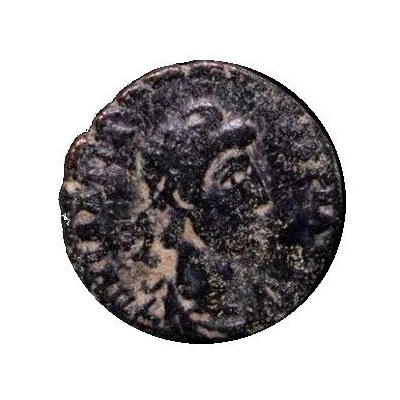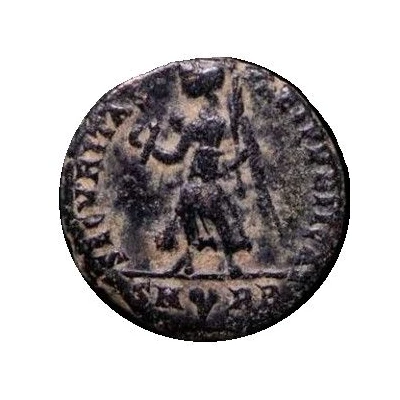Nummus - Gratianus SECVRITAS REIPVBLICAE, V-A; Arelate
| Bronze | 2.31 g | 17 mm |
| Issuer | Rome › Roman Empire (27 BC - 395 AD) |
|---|---|
| Emperor | Gratian (367-383) |
| Type | Standard circulation coin |
| Years | 375-378 |
| Value | Nummus (1⁄7200) |
| Currency | Solidus, Reform of Constantine (AD 310/324 – 395) |
| Composition | Bronze |
| Weight | 2.31 g |
| Diameter | 17 mm |
| Shape | Round (irregular) |
| Technique | Hammered |
| Orientation | Coin alignment ↑↓ |
| Demonetized | Yes |
| Updated | 2024-10-04 |
| Numista | N#406979 |
|---|---|
| Rarity index | 100% |
Reverse
Victory advancing left, holding wreath and palm.
Letters across fields.
Officina and mintmark in exergue.
Script: Latin
Lettering:
SECVRITAS-REIPVBLICAE
V - A
Translation: The security of the state.
Interesting fact
One interesting fact about the Nummus - Gratianus coin is that it features the first Christian symbol, the Chi-Rho monogram, on its reverse side. This symbol, which combines the first two letters of the Greek word for Christ (Chi and Rho), was used by Emperor Gratian to mark his conversion to Christianity and to promote the new religion throughout the empire. This coin, therefore, serves as a tangible representation of the transition from paganism to Christianity during the late Roman Empire.

